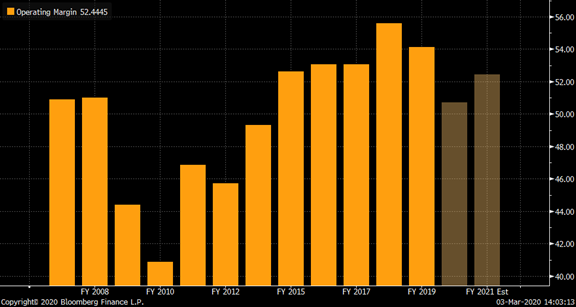There comes a point as a parent when you get used to your kids upstaging you. And here we have my 11-year-old son’s Sunday afternoon work upstaging me on a blog post.
What we have here is a simple(!) example of a Programmable Logic Controller in action. The PLC instructs the vision sensor to scan each tile, sending its answer back via the input port. Processors in the PLC then apply the algorithms to solve the puzzle, instructing the motors moving the robotic arms to twist and spin the cube accordingly, before displaying the solved cube with a final showboating spin.
Scale this up, ruggedise it, and you have what is essentially at the core of Japanese factory automation group Keyence Corporation. Keyence designs and manufactures sensors and systems such as these in an outsourced business model that makes it not only one of the world’s leading electronics companies, but also one of the most profitable. Annual gross margin is running in excess of 80%, with operating margins in the mid-50s, and a trough operating margin in 2009 following the global financial crisis still of more than 40% (Figure 1).
Figure 1: Keyence operating margins 2007-2021 (estimate)

Source: Bloomberg Finance LP, 3 March 2020
Since then, through investing a high level of R&D into new products, and into growing its sales force, Keyence has delivered more than 15% sales compound annual growth rate (CAGR). More impressively, the group’s sales from outside Japan have seen a CAGR in excess of 20% since a standing start a decade ago, thanks significantly to a deepening relationship with a certain US-based mobile phone manufacturer and its supply chain.
As in the video example, the combination of simple sensors, controllers and actuators can create a system that solves a problem significantly more quickly than a human can (I can confidently say it took me decades to not solve my childhood Rubik’s Cube, before more recently finally resorting to the internet and an evening in with a bottle of wine). The value of such solutions to any manufacturer running a production line and avoiding bottlenecks is immense. Whether it is using machine vision to check that a lid has been screwed on to a bottle correctly, or an engine component machined within tolerance, this is engineering that allows Keyence to exert huge pricing power.
This all comes into sharp focus in a world where manufacturers are, for the first time in decades, looking at broadening out supply chains and reshoring production facilities in alternative locations. Currently, cost pressures from changing trade tariffs, and supply issues due to coronavirus-related shutdowns, are forcing manufacturers to rethink. They will have to further embrace such engineering solutions if cost headwinds and risks to continuity are to be mitigated.





